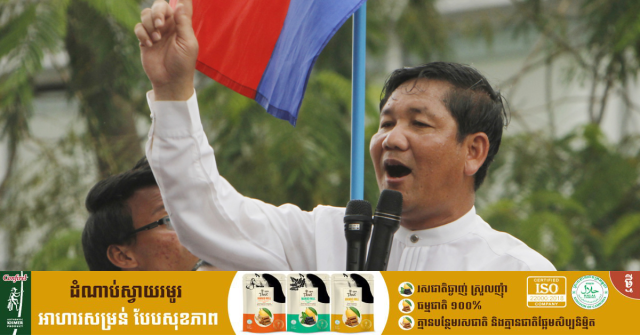A Temple Designed by Nature and Humans

- By Long Ton
- July 22, 2023 7:00 PM
SIEM REAP - With the temple’s signature look of overgrown tropical trees standing tens of meters above the stone roofs, which have sustained hundreds if not thousands of kilos of weight for centuries, Ta Prohm is among the most visited and well-known temples in the Angkor Archaeological Park in Siem Reap province. While its architectural design is impressive, although similar to that of other temples in Angkor Park—a Unesco World Heritage Site since 1992—what is beyond normalcy in this land of temples is that Ta Prohm has been integrated with Nature.
People from in and out of the country who return to Angkor keep on going back to Ta Prohm, which is part of the tour itinerary Smaller Tourism Circuit, and this, even though there are hundreds of temples to explore in the park. On its grounds, a Ch’pung tree (Tetrameles Nudiflora) dominates the scenery. Wanting it there, but not wanting it at the same time…These trees, although they do convey a beautiful impression for this sacred area, also pull the temple’s stones apart, their roots growing larger and their weight increasing over the years. Because of this tricky situation, the specialists working on the site have decided to keep some of the trees alive and healthy as a way of retaining the beautiful scenery while eliminating others deemed unsafe for the temple.
_1690014108.png)
The name of the temple Ta Prohm, which is the name of the Hindu deity Brahma in Khmer, may have been suggested by the sculptures of Lokeshvara—the Bodhisattva of Compassion—that can be seen along the gates. Since these sculptures were done with four faces, one wonders if they somehow could be connected with the four faces of Brahma.
Based on findings made through inscriptions, the name “Reach Vihear” is thought to be the earlier name of this temple. When mentioning this name, specialists working on history often refer to the era of King Jayavarman VII. After winning battles against the Cham in 1181, he presided over the construction of many Mahayana Buddhist temples that were dedicated to the soldiers who died in combat.
Ta Prohm was built during the reign of King Jayavarman VII as a way to obtain merits for his mother for her next life. For this reason, a Bodhisattva of Wisdom sculpted to resemble the king’s mother is enclosed in the central tower. During his reign, Buddhism was practiced at Angkor.
_1690014137.png)
Research has also showed that Ta Prohm functioned both as a religious and an education centre and that, with its 60 hectares of land, it might have been one of the largest universities of its time.
Looking at the temple’s ground layout, its design represents a concept of the cosmos based on Mahayana Buddhism’s interpretation: four towers set around a central tower, some secondary buildings, galleries and libraries criss-crossing the compound.
Some Theravada Buddhism sculptures illustrating the Mahanipata Jataka, that is, the Ten Great Birth Stories of the Buddha, were sculpted along with designs of angels and traditional flowers along walls and gables.
_1690014174.png)
After the reign of King Jayavarman VII, changes in the state religion occurred during the 13th century. The majority of the Buddhist sculptures were modified to turn their designs into Hindu ones, such as those at Ta Prohm. An alteration can be seen on a sculpture of the Buddha that became a hermit or Shiva Lingam. Sculptures of the Buddha were entirely erased including some along outer walls, and sculptures inside frames were chipped away. It is believed that the original form of these sculptures was the picture of the Buddha sitting under a Naga with Lokeshvara by his side.
Some scenes sculpted at Ta Prohm also speak of people’s lives when it was built. On the lower sections of some walls, we can see sculpted scenes of people’s day-to-day activities at the time.
_1690014211.png)
A number of Cambodians living in the area have developed their own beliefs regarding the temple. For example, when they visit one of the temple’s towers known as Brasat Kourk Trung, or Temple of Chest-Beating, some believers will walk inside the tower, lean their backs on the wall and beat their chests in a rhythmic manner, this beating movement generating strong echoes inside the chamber. They believe that this action stirs away bad deeds.
For a number of years, the Apsara National Authority—Cambodia’s government agency managing Angkor Park—has worked hand in hand with the Indian Institute of Archaeology on the conservation and preservation of Ta Prohm through financial support from the Foreign Ministry of India.
_1690014246.png)
It should be noted that the restoration and conservation workers involved in the project are Cambodians who live in the area of Angkor, some of them having extensive experience in the field.
Read more on "Ta Prohm: Maintaining the Trees to Protect the Temple"
Written in Khmer for ThmeyThmey News, the story was translated by Ky Chamna for Cambodianess















